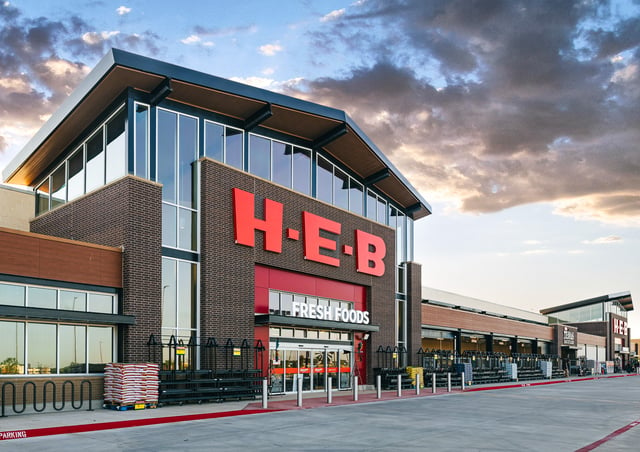H-E-B ranks as top grocery retailer in annual Dunnhumby study
A Texas grocery giant has once again topped Dunnhumby’s list of the best grocery chains.
According to the eighth annual Dunnhumby Retailer Preference Index (RPI), H-E-B ranks as the top grocery chain in the country for the fourth time. The study combines financial results with customer perception, taking five drivers of the customer value proposition into account: price, promotions and rewards; quality; digital; operations; and speed and convenience.
H-E-B, which operates more than 435 stores in Texas and Mexico, took the top spot three of the last four years, thanks to its long-term customer value proposition, noted Dunnhumby. Rounding out the top five in the latest RPI are Market Basket (#2), Costco (#3), WinCo Foods (#4) and Aldi (#5).
Dunnhumby noted that three of the top four retailers (H-E-B, Market Basket, and WinCo) are regional grocers, with the 15 additional retailers in the first quartile made up of a cross-section of non-traditional, national banners in club, discount, online and superstore formats.
The annual study found that “saving customers money” — through price, promotions and rewards — is the most important predictor for retailers to have stronger, long-term market success in the United States.
[READ MORE: MarketForce: Walmart ranks as America's primary grocer]
“Since releasing the first U.S. Grocery RPI eight years ago, retailers and shoppers have weathered COVID, supply chain disruptions, agricultural shortages due to climate impacts, and a prolonged period of high food inflation that have reshaped shopping behavior and how Americans perceive the grocery retail environment,” said Matt O’Grady, Dunnhumby's president of the Americas. “Clients across the grocery retail sector understand that market success is dependent upon saving shoppers money and implementing innovative pricing technologies to maintain their customer base.”
Additional highlights from the latest RPI include the following:
- Kroger and Albertson’s banners suffered ranking declines, with particularly steep declines in states where there were ongoing, high-profile court cases regarding their proposed merger Both King Soopers (Kroger banner) and Albertson’s declined in many areas of the RPI, which Dunnhumby says may be a sign of the negative halo cast by the merger news headlines.
- Amazon, the top U.S. grocery retailer in 2021 and 2022, fell out of the top three for the first time in eight years, landing in the sixth spot Dunnhumnby says part of this drop in rankings is due to the digital pillar having its first retreat in importance. Digital, the third most important pillar, fell from its high in 2023 of 18.5% to 16% in 2024.
Lidl and Trader Joe’s made significant gains in rankings in 2024 Lidl leapt 14 spots to move up to the top quartile for the first time, taking the 17th position. The grocer saw modest improvements in the areas of prices, digital, and operations.
Trader Joe’s, a former top U.S. Grocery Retailer in the RPI, stopped its slide and improved its ranking from the 15th position to the eighth position by being ahead of the market on quality while being about average at savings. Trader Joe’s, the second highest ranked retailer for quality, leads other quality-first retailers in savings perceptions.
“This year’s RPI shows that the fundamentals still apply as H-E-B has proven year over year. Any format can win,” added O’Grady. “The first step is to understand your customers and how customers perceive you. Secondly, prioritize efforts to save your customers money that is consistent with your positioning. And finally, use the RPI as a framework to help you determine where you should invest and where you should make tradeoffs.”
Dunnhumby’s data includes a survey of more than 11,000 American grocery shoppers.




